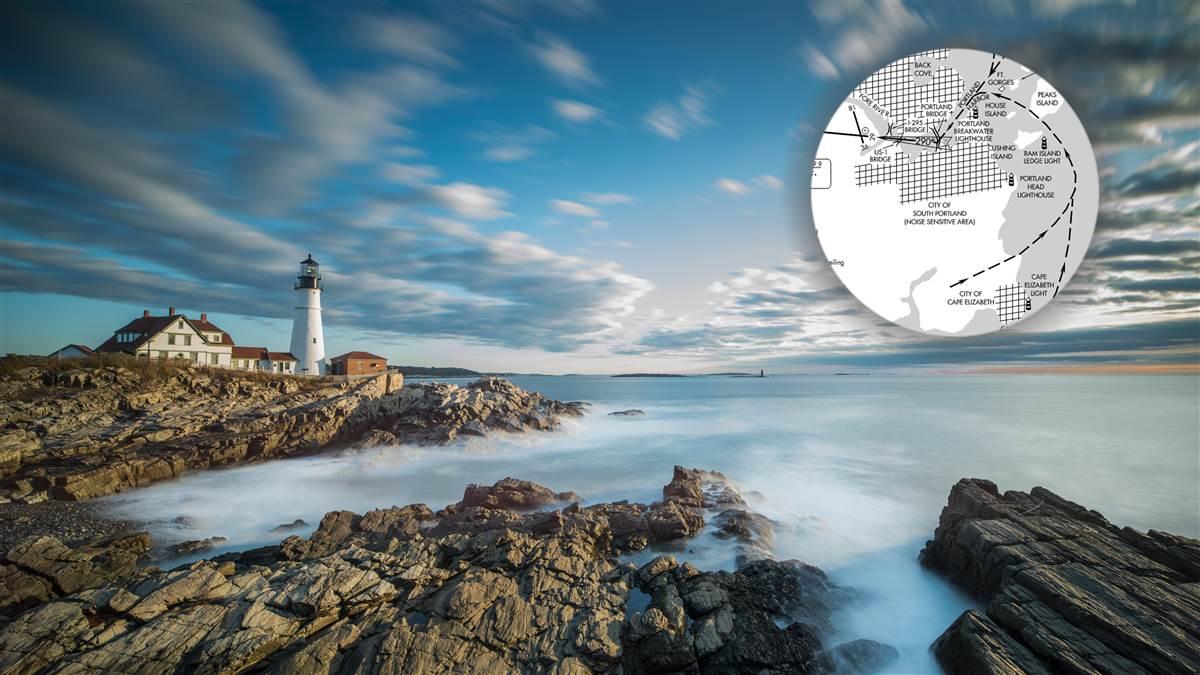The other Portland
Fly the harbor visual at PWM

Swoop over the Atlantic Ocean and the rocky coast of southern Maine at 3,000 feet or less, then spot the lighthouses: Cape Elizabeth is first when arriving from the south, followed by Portland Head, Ram Island Ledge, and finally the Portland Breakwater. Cross over the islands on the way to the harbor entrance, then follow the water as it narrows to a point at the Fore River. Overfly the bridges and roll out on a heading of 290 degrees; the runway lights are directly before you.
The most challenging aspect of flying the approach is keeping yourself from staring at the magnificent coastline, a dazzling variety of boats, the bustling harbor itself, and the city of Portland, which stands atop a hilly peninsula, and the office buildings seem to be at eye level on the right side of the airplane as you get close to the airport. Oh, and watch out for seagulls, of which there are many.
The Portland airport itself is divided between passenger airlines on the north side and GA on the south. And even though they share runways and radio frequencies, they operate quite independently. Also, airline traffic is relatively light, even in summer, so GA pilots won’t feel outnumbered.
The airspace surrounding Portland is Class C, and the controllers are exceptionally friendly and adept at coordinating aircraft ranging from amphibious floatplanes and single-engine trainers to corporate jets and airliners. One weather phenomenon that can complicate flying in fall is sea fog. It can roll in at just about any time of day and drop visibility below minimums. Thankfully, however, the fog is usually quite localized, and nearby airports often remain clear to use as alternates.



